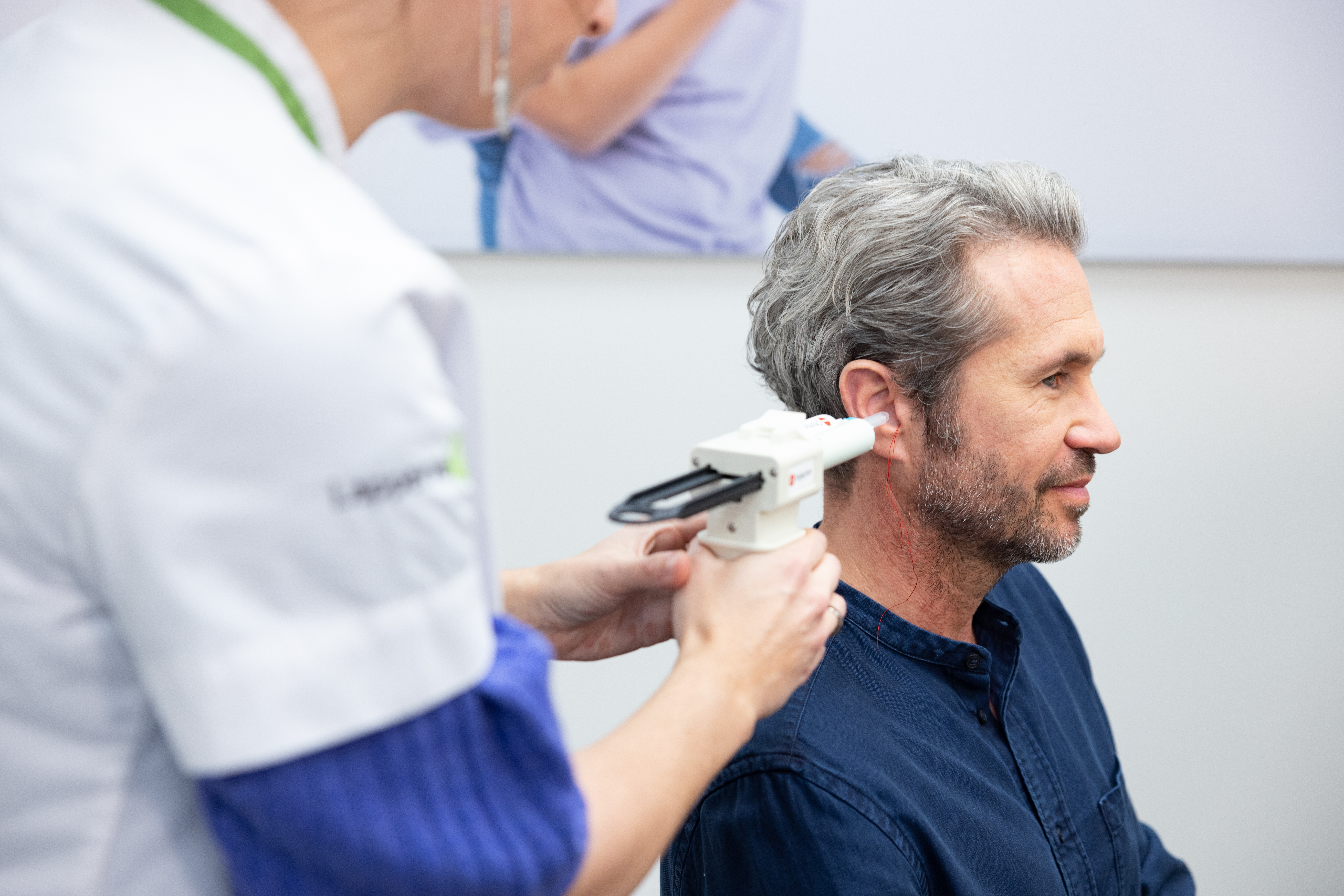How to find the ideal hearing aid | Connect Hearing
Just as every individual is different, no two types of hearing loss are the same. This is why there’s no ‘one size fits all’ approach when it comes to hearing aids. Fortunately, with the assistance of an audiologist, you will be able to find a hearing aid that perfectly fits your needs and your particular type of hearing loss. Below, we explain the journey toward purchasing a hearing aid, and what you should bear in mind.
How is the diagnosis made?
Do you have the feeling that it’s becoming harder and harder to hear conversations or the TV at home? Or has anyone ever suggested you should get your hearing checked? These might be signs of a potential hearing difficulty.
To find out whether or not you might be affected by hearing loss, you can take a free online hearing test to obtain an initial assessment of your hearing. We recommend you then have a no-obligation hearing test with your audiologist. In general, you don’t even need to book an appointment, and you’ll soon have an accurate assessment of how well you are hearing.
You will need a prescription from them in order to initiate the process of having your hearing aid paid for by your health insurance or social insurance company. The specialist will also do a hearing test and identify the medical reason for your hearing loss. The specialist will evaluate whether your hearing difficulty is of organic origin, and perform various tests such as a sound level test or an audiogram.
Our local hearing care professionals will be happy to offer you personalized advice and can help you find the right model for your requirements.
Which hearing aid should I buy?
Which hearing aid will suit you best depends on a number of factors. Firstly, the nature and severity of your hearing loss, and secondly your personal lifestyle and the type of work you do: If you interact regularly with other people or need to make a lot of phone calls, you will need one kind of hearing aid, whereas if you are in the car a lot, have a very active social life, or spend most of your time at home, you will need different devices. These factors can be used to narrow down the number of possible models. The individual’s level of ease with technology, the contribution being made by the health insurance company, and of course individual wearing comfort, all play a major role in the purchase of a hearing aid.
There are also major differences between behind-the-ear hearing aids and in-the-ear hearing aids. Of course, the price of the hearing aid depends on its design and functions. Most BTE hearing aids are cheaper than ITE devices.
Lower-cost hearing aids and premium models differ primarily in terms of the additional functions they offer. Modern hearing aids can be paired directly with smartphones, TVs, and audio equipment, for example. The choice of power supply should also be taken into consideration. Some models are fitted with hearing aid batteries that need to be replaced, while others have rechargeable batteries.
It’s always a good idea to compare hearing aids. This will allow you to explore the models supplied by different manufacturers and the advantages they offer. With the help of one of our hearing care professionals you can of course test and practice wearing the hearing aids.
The difference between hearing aids and hearing amplifiers
Are you thinking about choosing a hearing amplifier to correct your hearing loss?
Remember: A hearing amplifier cannot be compared directly with a hearing aid. Hearing amplifiers also feature a microphone and an amplifier, and in terms of structure and shape they are very similar to conventional hearing aids. However, they only increase the volume of sound, thus they cannot be adapted to your individual hearing loss or personal preferences. Hearing amplifiers are not prescribed by doctors and are usually purchased without specialist advice. We therefore recommend a hearing aid for those affected by hearing loss.
What is the best way of adjusting a hearing aid?
To ensure speech comprehension in everyday situations, the perfect settings for the hearing aid must first be identified. Our experienced professionals can help you with this. They will work with you to identify the ideal hearing aid for your needs, and adjust it to your hearing curve. The device will be adjusted to your individual needs in just a few appointments using a hearing aid test. The settings will be optimized until you are completely happy with them, and, most importantly, until you have become used to having your hearing back.
The brain literally has to get used to „hearing again“, and the process is not as quick as putting on glasses, for example. The fitting of your hearing aid and training to use the technology require a little patience. But it's certainly worth it. A functioning and perfectly adjusted hearing aid can bring back quality of life through good hearing. Our experienced Connect Hearing professionals will be happy to help you choose and adjust your hearing aid.
Steps to good hearing:
Other topics

A new hearing aid – What happens now?
Learn more
Technology and performance options
Learn moreVAC, WCB, WSIB, WorkSafeBC, ADP & ODSP accepted. *Hearing evaluations/tests are free for customers over the age of 18. Fees may apply where specific testing for employment purposes, reports, a copy of your results or the completion of an application is required. See clinic for full details.



